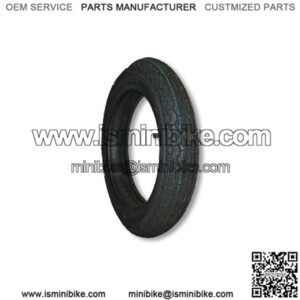If you’re like every red blooded American who doesn’t work for the government you probably pinch pennies, look for ways to save some dimes and make your dollar stretch as far as possible, and not just on personal income either.
Some even take this budgeting concept to the extreme.
Of course, making the most of your paycheck is good practice and downright responsible but sometimes this reach proves a bit detrimental. Especially when it comes to dirt bikes. You know that popular saying from a certain tire company that goes “Because so much is riding on your tires”? Of course it’s in reference to cars but the truth is, no one should ever skimp when it comes to the rubber around the wheels.
Especially when it comes to dirt bikes.
Running tires past their prime rather than stocking a fresh set can certainly make or break a winning run but it can also break you. Riding on old or cracked tires or a set without proper grip can send you into the dirt faster than the length of time it takes to ensure their efficacy.
That being said, it’s often easy to know when it’s time to change the tires on your dirt bike, and no, using the Lincoln head on the back of a penny isn’t the standard. Sometimes though, a set of tires at first blush look ready to roll but upon further review those suckers should be sent to the scrap heap.
Obvious Signs of Wear on the Tire
When inspecting your tires look for the obvious evidence showing it is time for new ones.
- Missing or torn knobs (or lugs)
- Rounded knobs
- Discoloration – black rubber turned gray
- Cracked
- Tires more than a year old
If your tires fall under any of these descriptions – Replace them.
Seasoned riders typically encounter the missing or torn knobs or rounded knobs as the first signs for replacement. Cracked and discolored tires usually result from poor storage and/or age.
A rounded knob is one that’s lost its crisp, cutting edges and it won’t be a single knob, it affects most of the tire and occurs from riding. Therefore, if you see the knob edges rounding or shaved in appearance you’ve worn the tires down. This is especially important when inspecting the acceleration side which is the front or middle section of knobs on the rear tire. The knobs on the edge of the tires can also round down which reduces the grip in turns causing you to wash out.
Not So Obvious Signs of Wear on the Tire
Your rubber is hard. Wait, that doesn’t sound quite right. No, wait, actually it does. Your tire could have a nice, slick black finish that screams ride me but because of age or bad storage or just a subpar brand of tire, the rubber has hardened. That doesn’t make for a comfortable or even safe ride.
Keep in mind, old tires typically harden but hard tires are not necessarily old. Neglecting tires by leaving them in the sun or out in the musty barn hardens tires faster than time.
You’ll probably never wear the thick knobs down to a bald spot (if you do then you’ve been riding with angels) but you can certainly shave into one area of the tire more than another. You’ll feel this when riding on flat terrain because the bike hops a bit like having a bulge in the tire.
However, actual bald spots show more on the side of the tire carcass where it’s thinner. These areas pose a threat to rupturing while riding or landing a jump.
Look at the base of the knobs on the side of the tire for cracking
Some cracking is not so easily seen so get a good look at the base of the side knobs which can clue you in to the age and integrity of the tire.
If you find it’s time to replace a tire best practice says to replace both tires together regardless of whether one looks better than the other. Typically the rear tire wears faster because it’s on the drive wheel. The only exception would be if the tire of a fresh set goes bust after a few hours of riding time. In this case you either got a raw deal or hit something while riding.
Tips for Extending the Life of a Tire
We’d recommend spraying the tire down with lots of Armor All or some other protectant like Maxima SC1. This prevents cracking and general wear and tear.
Ok, JUST KIDDING. Don’t use that stuff on your tires.
Riding with the proper inflation for the terrain you’re on is really the best way to extend the life of your dirt bike tires in that it prevents a flat or blowout. Since the life of a tire is relatively short, probably half a dozen rides (30 minute Motos or six hour fun runs through the trails) for the typical rider, riding with too low or too high air pressure in the tires likely won’t impact the longevity of the tire like it does on a car.
About Tire
“dirt bike tire pressure”
“dirt bike tire changer”
“100/90 x 19 dirt bike tire”
“fat dirt bike tire”
“dirt bike tires”
“dirt bike tires near me”

